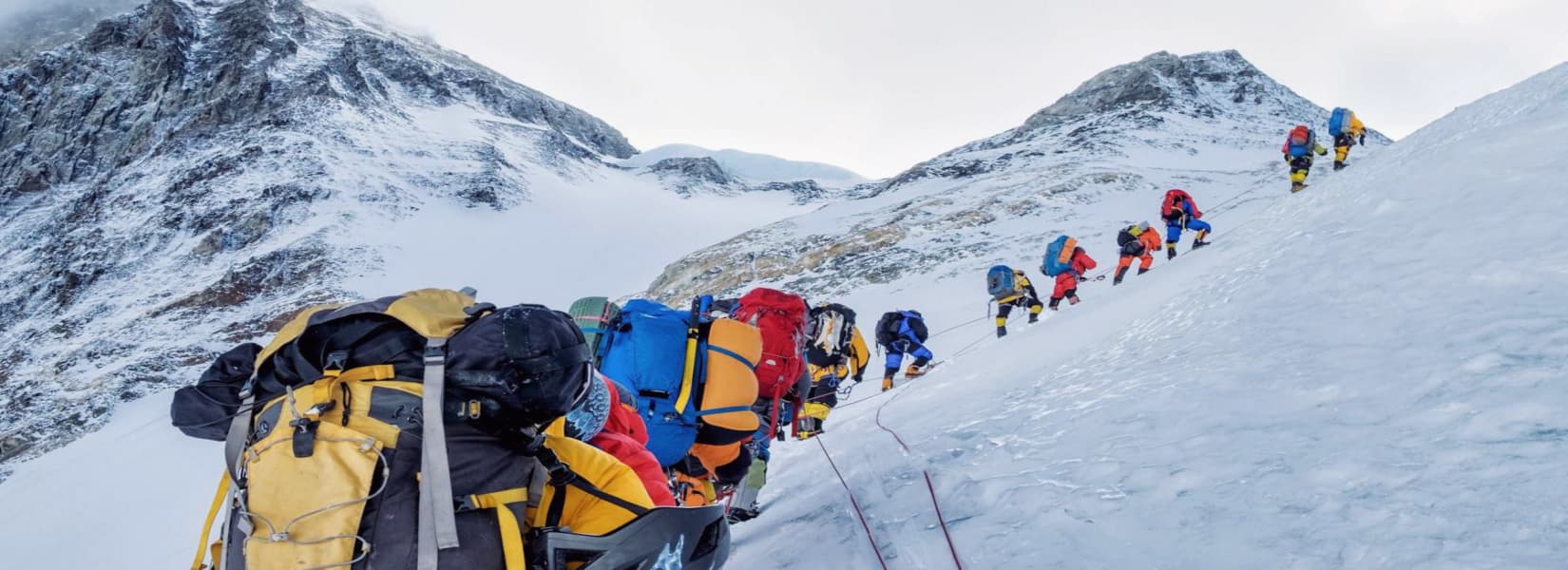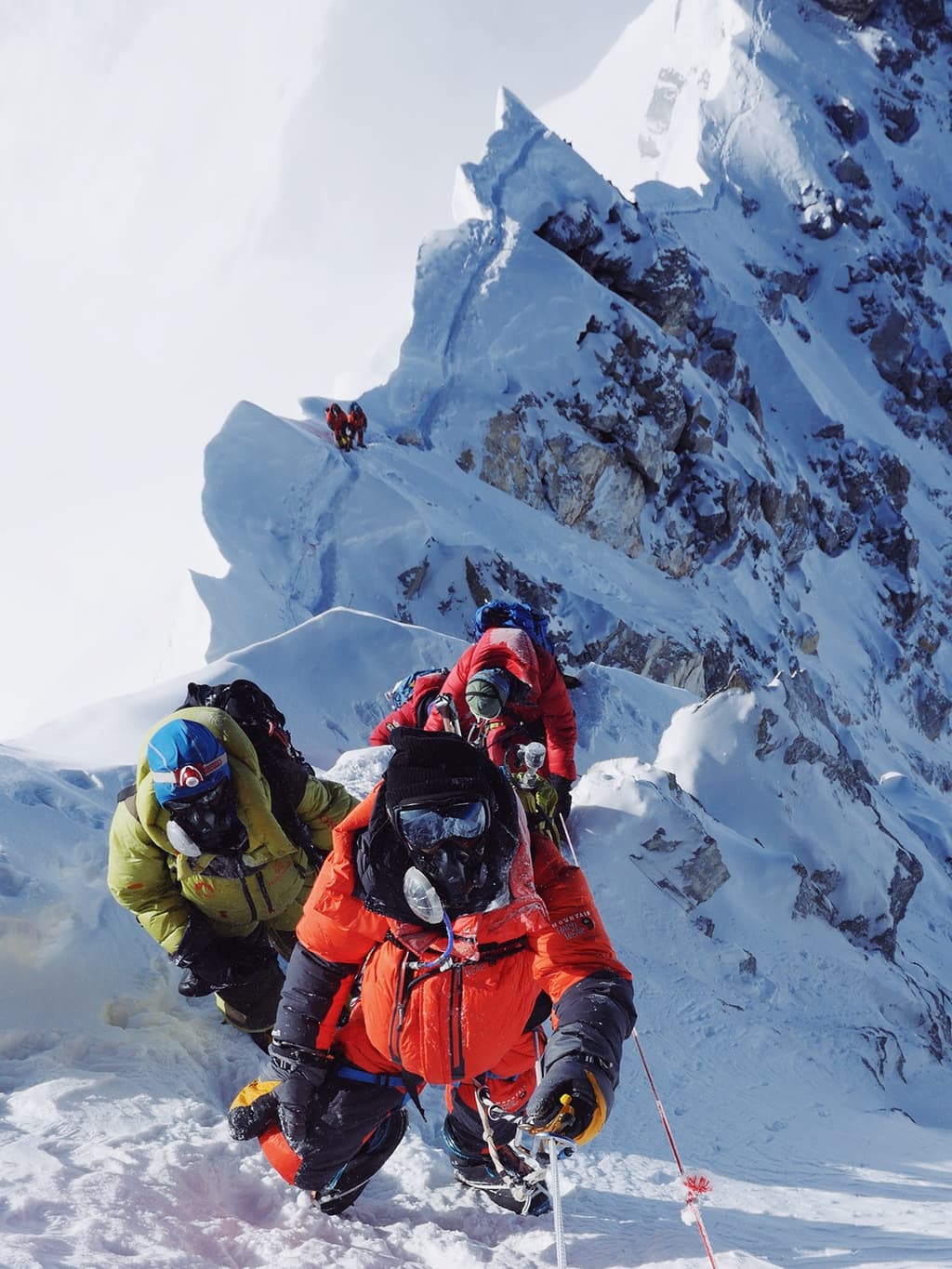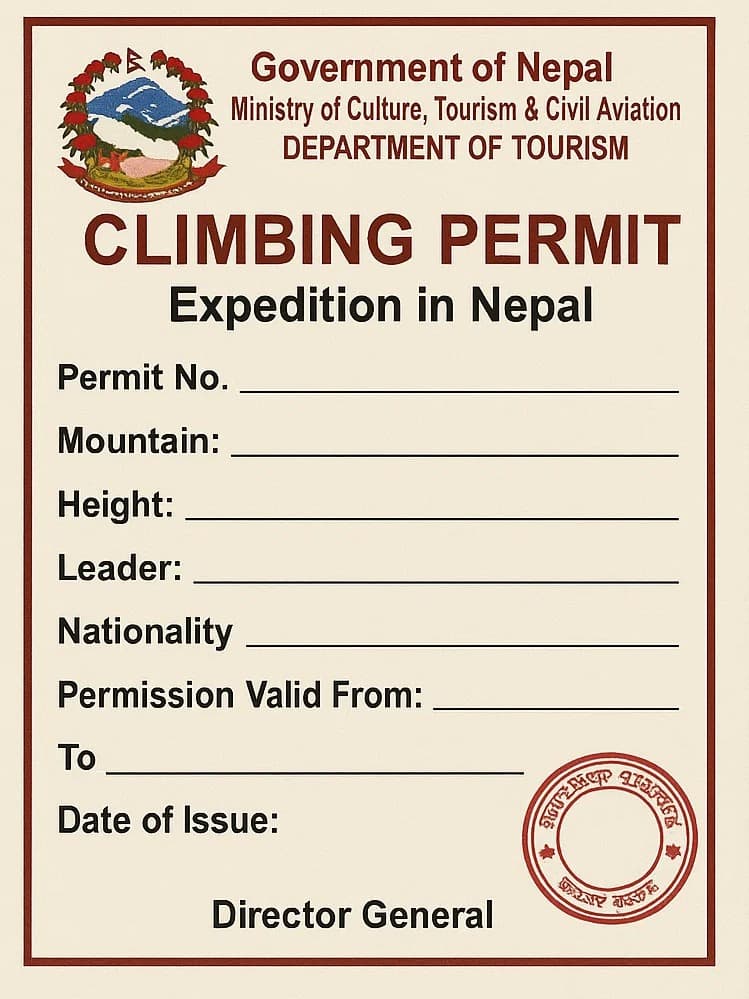Planning a mountain adventure in Nepal? The timing of your expedition can make all the difference between triumph and disappointment. For adventurers and mountaineers looking to conquer Nepal's majestic peaks, understanding the optimal climbing seasons is essential for a safe and successful journey.
In this guide from Everest Sherpa Expeditions, we'll explore the best times to climb Nepal's famous peaks, breaking down weather patterns that affect climbing conditions, and highlighting how proper planning with experienced Sherpa guides can transform your expedition.
We'll cover:
- The prime climbing windows during pre-monsoon spring (April-May) and post-monsoon autumn (September-November)
- How weather conditions impact climbing safety and summit success rates
- The unique climbing requirements for popular peaks like Island Peak, Mera Peak, and Lobuche
Whether you're a first-time climber or seasoned mountaineer, this comprehensive guide will help you choose the perfect time for your Nepal peak climbing adventure. Let's explore when to schedule your Himalayan journey for the best possible experience.
The Best Seasons for Peak Climbing in Nepal
At Everest Sherpa Expeditions, we've identified two prime seasons for peak climbing in Nepal, each offering unique advantages for adventurers seeking to conquer the magnificent Himalayan summits.
Spring Season (April-May): Stable Weather and Clear Views
We consider the pre-monsoon spring season from April to May one of the most favorable times for peak climbing expeditions in Nepal. During these months, we experience remarkably stable weather conditions that create an ideal environment for climbers. The skies remain predominantly clear, providing exceptional visibility of the majestic Himalayan peaks that surround you during your ascent.
Spring climbing is characterized by minimal precipitation and moderate temperatures, making your climbing experience both safe and comfortable. May, which marks the tail end of the spring climbing season, continues to offer generally stable weather with mild temperatures that are perfect for summit attempts.
One of the most enchanting aspects of spring climbing is the vibrant landscape. As we guide expeditions during April and May, we're treated to hillsides adorned with blooming rhododendrons, Nepal's national flower, creating a colorful backdrop for your adventure. For specific peaks like Island Peak, May provides particularly favorable conditions with mild daytime temperatures and relatively warmer nights, enhancing your overall climbing experience.
Autumn Season (September-November): Ideal Post-Monsoon Conditions
The post-monsoon autumn season, spanning from late September to early November, presents another excellent window for peak climbing in Nepal. We find that after the monsoon rains have subsided, the mountains reveal themselves in pristine condition.
Autumn climbing conditions mirror many of the advantages found in spring. We enjoy stable weather patterns, crystal-clear skies that offer unobstructed views, and minimal precipitation that reduces climbing hazards. The moderate temperatures during these months create comfortable climbing conditions as you ascend toward your chosen summit.
Comparison of Spring vs Autumn Climbing Experiences
When we compare the two peak climbing seasons, we find both offer exceptional climbing opportunities with subtle differences. Spring provides the aesthetic bonus of flowering rhododendrons and vibrant landscapes, creating a visually stunning climbing environment. The progression from winter to summer means gradually warming conditions as your expedition advances.
Autumn, following the monsoon season, offers exceptionally clean air and often provides the most consistent visibility. The landscape transitions from lush green to golden hues as the season progresses, offering a different but equally breathtaking backdrop for your climbing adventure.
Both seasons feature stable weather patterns and clear skies that are crucial for successful summit attempts, with temperatures remaining moderate enough to maintain comfortable climbing conditions. Whether you choose spring or autumn for your expedition, we ensure you'll experience Nepal's peaks at their most accessible and beautiful.
Weather and Climbing Conditions During Peak Seasons
Understanding the weather and climbing conditions during Nepal's peak seasons is crucial for a successful expedition. We've gathered detailed information to help you prepare for the varying conditions you'll encounter at different elevations.
Temperature Variations at Different Altitudes
In peak climbing season, particularly May, we experience a wide range of temperatures depending on altitude:
- At lower elevations such as Lukla and Namche Bazaar, daytime temperatures typically range from 10°C to 20°C (50°F to 68°F), creating comfortable trekking conditions
- As we ascend to higher altitudes, temperatures progressively decrease
- Nighttime temperatures at higher elevations frequently drop below freezing
- May offers some of the most stable temperature patterns, with relatively warm days and cool but manageable nights
Visibility and Mountain Views
The peak climbing season brings exceptional visibility conditions:
- May typically features clear skies with minimal precipitation
- Climbers enjoy breathtaking, uninterrupted panoramic views of iconic peaks including Everest, Lhotse, Nuptse, and Ama Dablam
- The abundant sunshine during this period significantly enhances visibility Clear conditions contribute to a more pleasant overall trekking experience
- The excellent visibility not only provides spectacular views but also improves safety during climbing operations
Trail Conditions and Accessibility
Trail conditions during peak seasons are generally optimal:
- In May, the trekking trails to popular destinations like Everest Base Camp and Island Peak remain relatively dry and stable
- We observe significantly lower chances of rainfall and snowfall during this period
- The dry conditions result in well-maintained paths with minimal mud
- These favorable trail conditions offer safer and more comfortable journeys for climbers
- The improved accessibility facilitates easier navigation along the routes
- Stable trail conditions reduce the risk of weather-related delays or complications
With these optimal weather conditions, clear visibility, and accessible trails, it's easy to understand why May stands as one of the premier months for peak climbing in Nepal.
Popular Peaks and Their Optimal Climbing Times
Island Peak (Imja Tse): Best Times and Difficulty Level
We offer expeditions to Island Peak, also known as Imja Tse, which stands at an impressive 6,189 meters (20,305 feet). This peak has become one of our most requested destinations for climbers who are seeking a challenging ascent while enjoying breathtaking Himalayan panoramas.
From our extensive experience guiding in the region, we've found that the best times to climb Island Peak fall within two distinct seasons. The pre-monsoon (spring) season from April to May offers excellent conditions, as does the post-monsoon (autumn) season from late September to early November. During these periods, we typically encounter more stable weather patterns that are conducive to successful summit attempts.
In terms of difficulty, we classify Island Peak as a moderately difficult climb. Our clients need basic mountaineering skills, including proficiency with crampons, ice axes, and ropes to navigate the steep and glaciated terrain. The ascent involves technical climbing elements, particularly near the summit section, where we utilize fixed ropes and sometimes require ladder crossings over crevasses.
Mera Peak: Season-Specific Climbing Considerations
We regard Mera Peak as an exhilarating adventure for those looking to reach impressive altitudes. Standing at more than 6,400 meters, it holds the distinction of being referred to as the highest trekking peak in Nepal. When we guide expeditions to Mera Peak, we carefully consider seasonal factors that significantly impact the climbing experience.
Lobuche East: When to Attempt This Technical Climb
Lobuche East, situated at 6,119 meters (20,075 feet) in Nepal's renowned Khumbu region, presents a different set of challenges. We typically schedule our Lobuche East expeditions during the autumn months (September-November), which we've found to be generally the best time for trekking and climbing in this region of Nepal.
The timing of a Lobuche East climb is particularly crucial due to its technical nature. During autumn, we experience more stable weather patterns that make navigating the technical sections more manageable and safer for our climbing teams. With the monsoon season behind us, visibility improves dramatically, allowing us to fully appreciate the spectacular views of the surrounding Himalayan giants while making our way to the summit.
Planning Your Nepal Peak Climbing Expedition
Duration Requirements for Different Peaks
When planning a peak climbing expedition in Nepal, understanding the time commitment is crucial. For Island Peak, we typically allocate between 16 to 20 days for the complete expedition. This timeframe allows for proper acclimatization and ensures a safer climbing experience. The journey includes approximately 7 to 9 days of trekking from Lukla to Base Camp, followed by 1 to 2 days dedicated to the summit push and descent.
We always emphasize the importance of not rushing this process. Each climber progresses at their own pace, and we structure our itineraries to accommodate varying levels of experience and physical conditioning.
Acclimatization Strategies for Safe Climbing
With safety being our top priority, we implement comprehensive acclimatization protocols during our expeditions. At Island Peak Base Camp, we dedicate specific days solely for acclimatization to prevent altitude sickness—a serious concern at high elevations.
During these acclimatization days, we provide essential training to prepare climbers for the challenges ahead. This includes instruction on proper use of climbing equipment, techniques for navigating various terrain types, and safety procedures. These sessions not only help adjust to the altitude but also build confidence and skills needed for a successful summit attempt.
Flight Considerations and Logistics
We begin our Island Peak adventure with a scenic 30 to 40-minute flight from Kathmandu to Lukla. This flight offers breathtaking aerial views of the Himalayan landscape while saving several days of difficult trekking.
When planning your expedition, we recommend considering the timing carefully. May typically presents lower chances of flight delays and cancellations on the Kathmandu-Lukla route, which significantly contributes to smoother expedition logistics. This can be a crucial factor in maintaining your itinerary timeline and avoiding unnecessary waits that might affect your overall climbing schedule.
Our logistics team carefully monitors weather patterns and flight conditions to minimize disruptions to your climbing schedule, ensuring that your expedition proceeds as planned whenever possible.
The Essential Role of Sherpas in Peak Climbing
We at Everest Sherpa Expeditions understand that Sherpas are truly the backbone of any successful climbing expedition in Nepal. These indispensable local guides possess intimate knowledge of mountain terrain that simply cannot be matched by foreign climbers.
Expert Mountain Navigation and Route Selection
We rely on Sherpas for their exceptional ability to guide the way through the most challenging mountain landscapes. Their intimate familiarity with the terrain allows them to select the best possible paths to reach the summit. Our Sherpa team members know the local language, people, and culture, which proves invaluable when navigating through remote mountain regions. With their guidance, we ensure that our clients follow optimized routes that balance safety with efficiency.
Technical Support: Rope Fixing and Equipment Management
Our Sherpas work tirelessly for weeks before peak climbing seasons begin. They meticulously fix routes, book spaces at various camps, and build essential infrastructure to ensure climbers' comfort and safety. We've witnessed firsthand how they establish complex networks of fixed ropes, aluminum ladders, and anchors over treacherous crevasses. The equipment management role of Sherpas cannot be overstated – they carry significant loads including tents, sleeping bags, cooking equipment, oxygen tanks, and medical supplies, often performing this heavy lifting at extreme altitudes where the air is thin and movement is difficult.
Emergency Response and Rescue Capabilities
With our years of experience in mountain expeditions, we've come to value the emergency response capabilities of Sherpas as perhaps their most critical contribution. These remarkable individuals are uniquely adapted to extreme altitudes and undergo specialized training in crevasse rescue and first aid. Our Sherpa team provides essential care for climbers, from cooking hot meals and boiling water at base camps to more critical assistance for those suffering from altitude sickness. In emergency situations, they administer oxygen when needed or help transport affected climbers to lower elevations. Most importantly, Sherpas routinely risk their own lives to save others, safely transporting incapacitated climbers through treacherous terrain when emergencies arise.
We consider ourselves fortunate to work alongside these extraordinary individuals whose skills and dedication make peak climbing in Nepal not just possible, but also as safe as it can be in such extreme environments.
The Complete Peak Climbing Experience
Cultural Immersion Along Trekking Routes
As we guide climbers through Nepal's majestic peaks, we ensure they experience more than just the thrill of summit day. Our expeditions take you through picturesque Sherpa villages where authentic cultural immersion awaits. We proudly share our Sherpa hospitality with every trekker, opening doors to ancient monasteries and sacred sites along the routes.
Through our guided tours, we offer unique insights into our traditions and daily lives. We believe that understanding the local communities enhances your climbing experience, creating memories that extend beyond the physical achievement of reaching a summit.
Physical Preparation and Training Requirements
We always emphasize that peak climbing in Nepal requires adequate physical conditioning. Our climbing expeditions, such as Island Peak, are considered moderately difficult and demand basic mountaineering skills. We ensure all our clients are prepared to use essential equipment including crampons, ice axes, and ropes before attempting any summit.
With our years of experience, we've found that successful climbers come with not only physical fitness but also mental preparedness for high altitude challenges. Our expeditions often involve long hours of trekking and climbing, requiring stamina and determination.
At Base Camp, our experienced guides conduct comprehensive training sessions. We practice essential mountaineering techniques and review crucial safety protocols to ensure everyone in our group feels confident and prepared for the climb ahead.
Equipment and Gear Considerations for Different Seasons
We take equipment requirements very seriously across all seasons. Proper layering is essential for staying warm and comfortable throughout your expedition with us, especially as temperatures drop significantly at higher altitudes.
Our Sherpa team carries critical equipment and supplies for all climbers. We ensure you have access to necessary items including high-quality tents, appropriate sleeping bags for varying temperatures, and oxygen tanks when required. Different seasons demand different gear configurations, and we adjust our recommendations based on weather forecasts and seasonal conditions.
We pride ourselves on providing comprehensive gear guidance tailored to each expedition and season, ensuring your safety and comfort remain our top priorities throughout your peak climbing experience with us.
Nepal's peak climbing seasons offer a perfect blend of favorable weather, breathtaking landscapes, and optimal climbing conditions. Spring (April-May) and autumn (September-November) stand out as prime times with stable weather, clear skies, and moderate temperatures that ensure both safety and spectacular views. These seasons allow climbers to experience the majesty of peaks like Island Peak, Mera Peak, and Lobuche East while enjoying vibrant trekking trails adorned with blooming rhododendrons.
The success of any climbing expedition in Nepal ultimately depends on careful planning and the invaluable support of Sherpas—the unsung heroes of the mountains. These expert mountaineers not only guide the way and carry essential equipment but also set up camps, fix ropes, prepare meals, and potentially save lives in emergency situations. Their profound knowledge of the terrain, weather patterns, and high-altitude conditions makes what seems impossible achievable. When you embark on your Nepal peak climbing adventure, remember that while reaching the summit may be your goal, it's the journey through this spectacular landscape and the connections you make along the way that create memories to last a lifetime.
If you need any further information, please contact us by email: [email protected], Phone: +977- 980 195 6248 (WhatsApp).


